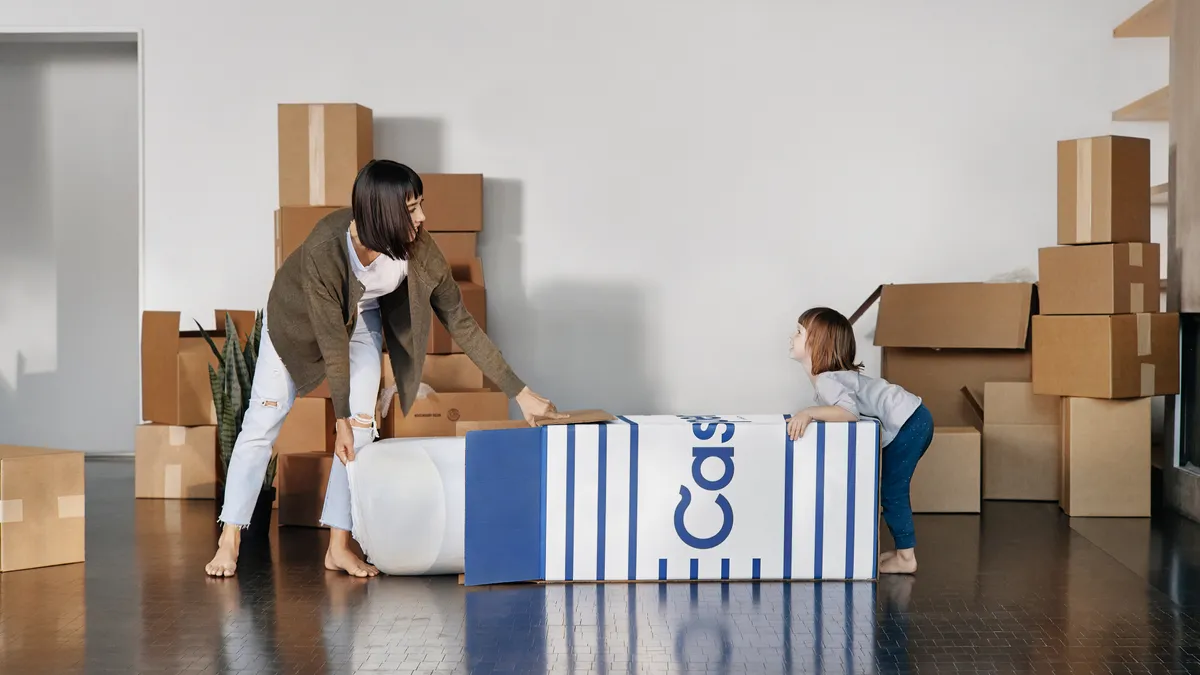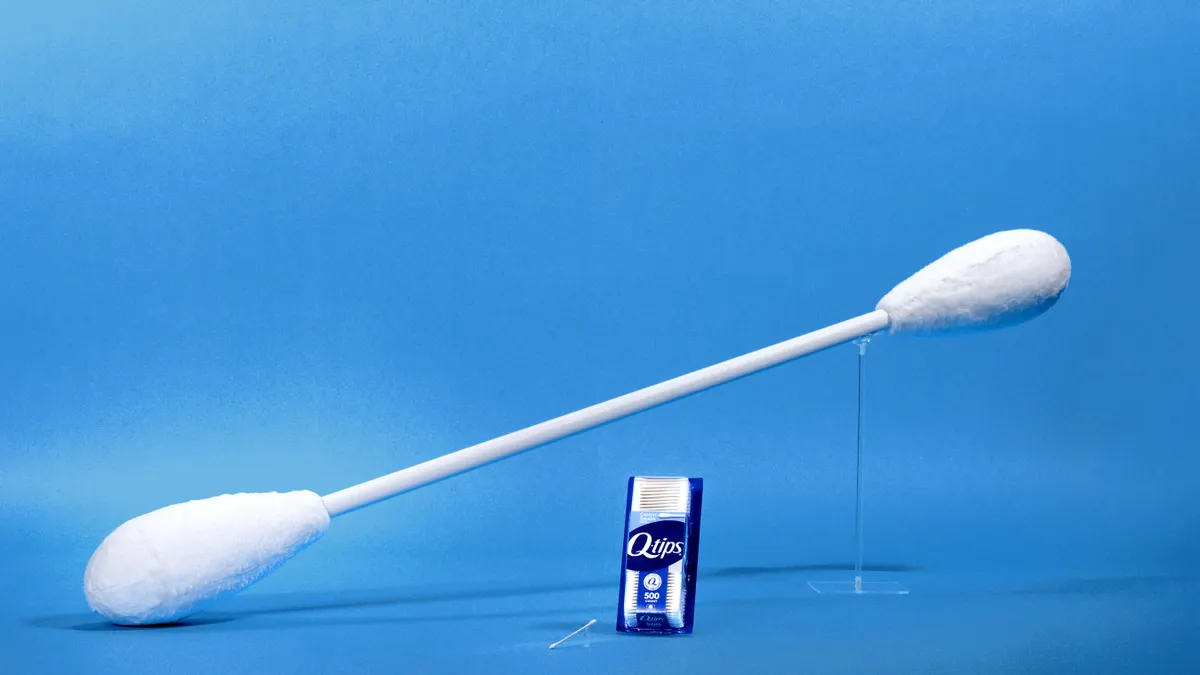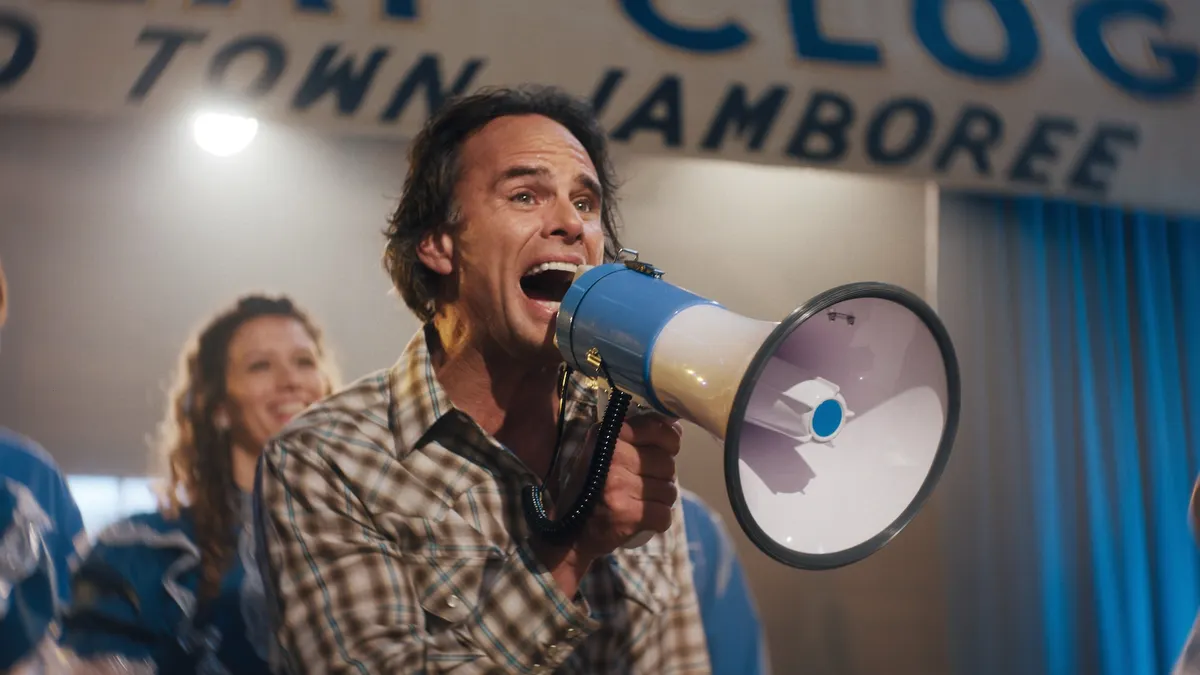All good things must end — and all old things must take a little longer to end. So might run the story of the mattress category, a retail sector that was dominated for decades by a few select companies, and only recently disrupted by a host of newcomers. Now those upstarts' own reckoning may be on the horizon.
The e-commerce slumber party arguably began with Casper, which launched in 2014 and holds the majority of the market share among the e-commerce newcomers, according to data from Edison Trends. The company's new Chief Marketing Officer Jeff Brooks, who started in February, doesn't see that interest fading anytime soon, despite the many entrants into the sector.
"Is it dynamic? Is it getting increasingly competitive? Sure, but that's because we've turned a corner now and I think sleep is becoming culturally more resonant," Brooks said in an interview with Retail Dive. "It's less cool to come into work each day and brag about how little you slept."
But before mattresses became cool, the category rested on the backs of a small number of retailers and manufacturers — with vastly different rules and marketing strategies than the startups of the 2010s.
A sector ripe for change
Until recently, "mattress store" was pretty much synonymous with expectations of a large warehouse-style location, often filled with similar-looking products and colorful signs out front boasting of sales — holdovers of a category that was built on a few early entrants and persisted in its original form through a long period of hardly any challengers.
Long-standing mattress retailer Sleepy's was founded in 1931, with Mattress Firm coming around in 1986 and Tempur-Pedic in 1992. For many of the more traditional mattress retailers, sales strategies consisted of inflated prices and little innovation, according to Hart Posen, associate professor of management and human resources at the University of Wisconsin.
"At store number one, they sold you 'posturepedic best sleep' and then the next store, so they wouldn't have to compete, they had 'posturepedic good sleep.'"

Hart Posen
Associate Professor of Management and Human Resources at the University of Wisconsin
"At store number one, they sold you 'posturepedic best sleep' and then the next store, so they wouldn't have to compete, they had 'posturepedic good sleep' — the same mattresses with slightly different colored threads or what have you and a different name to make price comparison more difficult," Posen told Retail Dive.
Despite being seemingly ripe for disruption, the industry posed many hurdles for newcomers — among them, the difficulty of shipping mattresses, which made it much easier for local players to enter the industry, but hard for them to expand without opening more brick-and-mortar locations. It was primarily those obstacles that prevented the mattress stalwarts from facing much national competition, according to Posen.
The tide changed rapidly as consumers became used to the idea of buying products direct from the manufacturers — and online. Mattress Firm acquired Sleepy's in 2015 and then was itself acquired by Steinhoff International Holdings in 2016, consolidation that created the largest store-based mattress retailer in the United States, but also lost the company the Tempur Sealy brand, which last year held 8.1% market share in the mattress category when it stopped selling at Mattress Firm due to conflicts over the contract.
According to Michelle Grant, head of retail at Euromonitor International, that power struggle created an interesting climate for both physical mattress retailers and the up-and-coming e-commerce players who had jumped on the scene by then.
"You have the store-based retailers consolidating in order to use their leverage over the manufacturers and then that backfiring as consumers get more accustomed to buying mattresses direct from the manufacturer itself," Grant noted, "whether that's in-store or online."
Still, traditional mattress players are by no means out of the picture. Mattress Firm has increased its market share in the Homewares and Home Furnishing segment (which also includes non-mattress specific players like Ikea, Bed Bath & Beyond and Macy's) all but one year from 2012 to 2017, according to data from Euromonitor, going from 1.4% market share in 2012 to 3.1% in 2017 after the Sleepy's and Steinhoff acquisitions.
Sleep Number has either held steady or increased its year-to-year market share in that same time frame (that company holds 9.3% market share in the mattress category and 1.3% in Homewares and Home Furnishing).
The future of those players, though — the business decisions that they will make and are already making — find their roots in the popularity of Casper and the e-commerce mattress boom.
The bed-in-a-box revolution
The traditional manufacturers (Serta, Simmons and Sealy, the latter of which merged with Tempur-Pedic in 2012) sold primarily at department stores, mattress-specific retailers such as Mattress Firm and Sleepy's, and local or regional furniture stores, like Raymour & Flanigan and Art Van. Selling online wasn't a part of the playbook, due mainly to high shipping costs, but all of that changed with the creation of the "bed-in-a-box" technology in 2007, according to Posen.
"When the technology was invented to put foam mattresses in a box, so that one little UPS guy in little brown shorts could carry it to your door and you could carry it upstairs to your bedroom yourself, then you no longer needed brick-and-mortar in every city," Posen said.
No longer penned in by the necessity of local logistics, the e-commerce tidal wave was able to usher in the era of Casper and Purple, companies built on selling mattresses direct to consumer (DTC) for lower prices. But they didn't just solve the convenience problem, although the ability to ship just about anywhere with manageable-sized boxes was a major improvement; they also changed the pricing game.
"It took a lot of the opaqueness that came in with mattress retail prices out of the system."

Michelle Grant
Head of Retail at Euromonitor International
Being able to operate through e-commerce took away many of the costs that physical mattress retailers had to bear, and the traditionally sky-high prices in the mattress sector also made it possible for the e-commerce newcomers to lower prices and still make a profit.
"Because of the extremely large margins — in some cases 900% — in the mattress category, it was very easy for others to launch similar products," Grant said, "and the mattress in the box became somewhat of a commodity in certain extents with all of these other competitors launching very similar products in that space."
Grant noted that some of the smaller online brands are profitable purely because of the high margins — allowing them to pay for marketing, shipping and the mattress itself without losing money. Indeed, the number of mattress sellers founded blossomed post-2010, with the likes of: Tuft & Needle (2012); Casper and Leesa (2014); GhostBed, Helix Sleep and Purple (2015) all entering the market within that time frame.

For online players entering the mattress space, it wasn't just about lowering prices, though — the disruption was a large-scale attempt to solve decades-old industry pain points. They implemented flat prices rather than the fluctuating sales prices of old, made mattresses easy to order and deliver, and gave customers extra long trial periods, addressing three aspects Grant calls "the worst parts of buying a mattress in a store."
"It took a lot of the opaqueness that came in with mattress retail prices out of the system and because of this consumer-centricity and all of these aspects, it really began to put pressure on the more traditional mattress retailers, as well as the mattress manufacturers themselves," Grant said.
The pressured salesman-like environment was also thrown to the sideline, and Brooks credits much of Casper's success to the company's decision to make the brand "populist, democratic, self-aware, playful, whimsical" — in short, everything that traditional mattress retailers were not. Holding onto that brand character has grown more difficult over time as the company scales and attempts to broaden its appeal, but Brooks doesn't see the brand's core marketing shifting under his tenure.
Indeed, just this month Casper launched an experiential concept in New York focused around napping, relaxation and wellness, where consumers can actually pay to take naps — an idea strikingly different from heading into the traditional local mattress warehouse.
That differentiation in marketing and customer interaction, though, might be the most important point of these moves, according to Posen.
"This business has been oligopolistic for a long time with, putting aside Tempur-Pedic, very little innovation," Posen said. "They've existed basically on having tremendous market power and power over their retailers. This is sort of a signal that, 'we're going to do it completely differently.'"
And they certainly have. Purple, which entered the space shortly after Casper, is well-known for quirky video marketing campaigns that the company targets on social media, bringing in millions of views and, according to the company, $75 million in online sales in 2016.
Despite the number of competitors in the online mattress space, Casper, as one of the larger direct-to-consumer players in the category (and holding 1.9% of the market share in the mattress sector, per Euromonitor), is more concerned about brick-and-mortar competition, which Brooks notes is "where 85 to 90% of the industry volume is."
"That's not to say we don't track or care about DTC competition, of course we do, but we're really thinking about addressing that larger issue of consumer behavior change and market penetration," Brooks said, noting that a lot of mattress customers are still used to making their purchases in stores. "We have to keep our eyes on the larger prize, which is something that I think we've done a pretty good job of."
The shakeout
The e-commerce-led disruption has been painted in a rosy hue, despite the relatively small portion of the market controlled by the newcomers. But while they've got large competitors, the Purples and Caspers of the mattress space are a loud minority. Not only have many traditional mattress sellers expanded their own offerings to add bed-in-a-box style products, but the success of small online players has also led to collaborations like Purple and Mattress Firm.
More partnerships are likely — Casper just started popping up in Nordstrom stores and already has some of its own free-standing stores — and consolidation among the e-commerce players, as well as acquisitions by large mattress sellers and department stores, are probably on the horizon, Grant notes.
"For Mattress Firm, they get access to a brand that knows how to market digitally, that probably appeals to younger consumers, that really has an innovative product and an accessible price point for the next generation of mattress buyers," Grant said, pointing out the benefits of an acquisition for one of the more traditional players.
"This is a cheap and inexpensive and fast way to allow trial. Doing it yourself is a different game."

Hart Posen
Associate Professor of Management and Human Resources at the University of Wisconsin
Mattress startups wouldn't necessarily be losing out either. Aside from acquisition, a longstanding partnership provides these stores with physical space to showcase beds, tell their story and hopefully reach a larger demographic of shoppers. Perhaps most importantly, partnerships don't come with the cost of brick-and-mortar expansion.
"This is a cheap and inexpensive and fast way to allow trial," Posen said. "Doing it yourself is a different game. If you're all of a sudden Casper, really a pretty small firm, to set off a nationwide set of retail trial centers — that's both a big capital investment and a set of skills that they initially hadn't built."
Whether it was part of Casper's original game plan or not, it certainly is now. Brooks said the company is "aggressively" moving into the physical space, and plans to continue partnering with other retailers as well as opening its own stores. That being said, the company remains focused on choosing brand partners carefully: Ones that elicit the same level of brand love in their customers are usually high on the company's list, according to Brooks.
"[N]o matter how imaginative or effective our marketing is, there will be a population of mattress shoppers who are just not comfortable buying online, even with the 100 night, risk-free guarantee, even with everything else."

Jeff Brooks
CMO of Casper
"Part of it is reaching just more consumers in more places that may not be as familiar with Casper," Brooks said of their brick-and-mortar plans, "but another big part of it is that no matter how imaginative or effective our marketing is, there will be a population of mattress shoppers who are just not comfortable buying online, even with the 100-night, risk-free guarantee, even with everything else, and so the ability to try a bed or several different kinds of beds before buying is going to be important to that group."
One thing is certain: No matter how many startups make it through the mattress shakeout, there's no returning to the early days. The online invasion has changed not only where consumers shop for mattresses, but also how traditional mattress retailers and manufacturers operate in the space — and for the consumer, that's probably for the better.
"It's not that different from the used car dealer telling you how good that old Chrysler is, right?" Posen said of the old way of mattress selling. "You know damn well that deep down it's a s---ty old Chrysler."






















